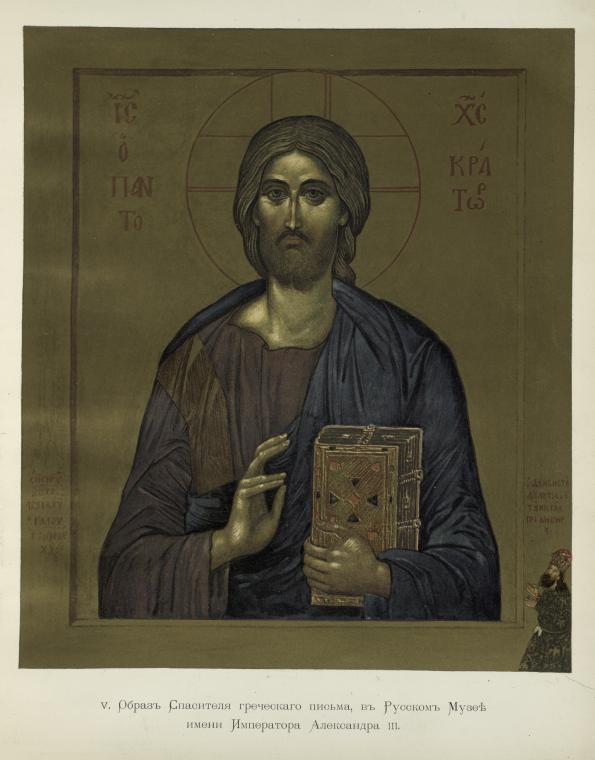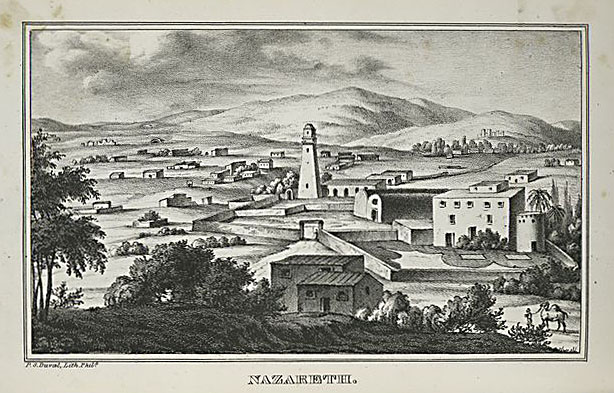Three Faiths
Finding Jesus at NYPL: A Research Guide

Perhaps no person in human history is more controversial than Jesus of Nazareth. The parable above (among many other well known ones) came from Jesus in the New Testament of the Christian Bible. In these quotes, Jesus emphasizes spiritual morality and responsibility; they also set up the foundation of Christianity. Despite the numerous teachings and sayings in the NT, Jesus is still an enigmatic figure shrouded in mystery; there is scant evidence about him that remains unclear, as he did not leave much behind regarding his own personal narrative and history.

Today people who believe and acknowledge Jesus Christ as the Messiah might identify themselves as Christians. With the God (as the Father), Jesus (as the Son) and the Holy Spirit comes the Holy Trinity which Christians believe that God is made of three divine persons. This blog post explores how one can conduct a biographical investigation of Jesus of Nazareth using our research collection at NYPL.

According to the New Testament, sometime in his early 30s, he started his ministry where he preached and performed miracles with his 12 disciples. In the 1st A.D., Jesus was ordered to be crucified for his alleged crimes of heterodoxical-teaching and preaching in Jerusalem. In the NT, it states that Jesus was not found in the tomb but was resurrected and would return for the Second Coming.
About 50 years later, the Gospel translated as "Good News" in Greek, transcribed and translated the accounts and stories of Jesus from Aramaic to Greek. The first and oldest Gospel in the NT, Mark, starkly describes Jesus as a miracle worker sent from above. Along with the other Synoptic Gospels (Matthew and Luke), they reveal and share the memories and visions of Jesus in various intimate ways but they also differ in their accounts. For example, during the crucifixion, in the Gospels of Matthew and Mark, passersby mocked Jesus but in the Gospel of Luke, people stood watching the trial. His crucifixion and resurrection have been widely debated, explored, dissected, and even ridiculed for centuries.
At NYPL, there is an abundance of resources with which to research the elusive life of Jesus. To simplify this daunting task, I have made two categories of selected primary and secondary sources:
Selected Primary Sources
- The Bible — Consider reading and analyzing the New Testament, specifically the gospel texts, as primary sources to reconstruct the life of Jesus. From King James Bible (this year marks the 400th anniversary of KJB) to the New International Version (NIV), there are a variety of Bibles from different centuries in several foreign languages held in The New York Public Library's Stephen A. Schwarzman Building. These can be found in the Rose Main Reading Room under the call number: "*R-RMRR BS" — you can also search for the Bible in the Library catalog under the title or subject: "Bible --"
- The Quran — In Islam, Jesus, known as Isa, is viewed as the Messenger of God, as well as the Messiah. The Quran, the central religious text of Islam, mentions Isa about 25 times. Like Christians, Muslims also believe in the death and resurrection of Jesus, but not as the last prophet. Discover more about Jesus in the Islamic faith >>
- NYPL's Digital Gallery is full of rich digital images of scriptures, manuscripts, prints, and portraits of Jesus of Nazareth, the Virgin Mary, the Nativity scenes, and others.
- Doing research on Ancient Israel or planning to learn Aramaic or Biblical Hebrew? NYPL's Dorot Jewish Division holds an extensive collection of Judaica and Hebraica that can help you get started in researching life, languages or archaeological sites in Ancient Israel. In addition, the Division also has collections pertaining to Judaism's views of Jesus.
- For those interested in researching the influence of Jesus in music, such as Contemporary Christian Music or Gospel, see this list >>
- For those interested in researching the influence of Jesus in art, see this list >>
- The Man Nobody Knows: A Discovery of Jesus (1925) by Bruce Barton presents "Jesus as the founder of modern business who forged 12 men from the bottom ranks of business into an organization that conquered the world." For other biographies of Jesus of Nazareth, see this list >>
- PBS Frontline recently aired a documentary called From Jesus to Christ: The First Christians, which follows and traces the historical and religious roots of Christianity.
- The Holy See — Vatican Library (1475) contains over 1.1 million printed books and manuscripts dating back to the ancient times. It is difficult to gain access to its collection, but they may store the richest resources uncovering and revealing the secret history of Christianity.
Selected Secondary Sources
- Anne Rice, author of numerous vampire series, wrote two fiction pieces from the perspective of Jesus in his youth: The Road to Cana (2008) and Christ the Lord: Out of Egypt (2009). Not much is known about Jesus during his childhood and adolescent days. These works are meticulously researched, deftly written, and reveal to the readers what Jesus may have seen and felt during his youth. There is also a third installation in the progress. For other fictions about Jesus by other writers, see this list >>
- For general works about Jesus of Nazareth in NYPL, see this subject list >>
- For films such as The Passion of the Christ or Jesus Christ Superstar at NYPL, see this list >>
- For scholarly articles on Jesus of Nazareth, Biblical criticism, the history and theology of Christianity, consult the following databases: JSTOR, Project Muse, ATLA Religion, and Academic Search Premier. Explore more databases >>
Read E-Books with SimplyE
 With your library card, it's easier than ever to choose from more than 300,000 e-books on SimplyE, The New York Public Library's free e-reader app. Gain access to digital resources for all ages, including e-books, audiobooks, databases, and more.
With your library card, it's easier than ever to choose from more than 300,000 e-books on SimplyE, The New York Public Library's free e-reader app. Gain access to digital resources for all ages, including e-books, audiobooks, databases, and more.
If you don’t have an NYPL library card, New York State residents can apply for a digital card online or through SimplyE (available on the App Store or Google Play).
Need more help? Read our guide to using SimplyE.
![[The last charge to Peter.], Digital ID 1576237, New York Public Library [The last charge to Peter.], Digital ID 1576237, New York Public Library](https://images.nypl.org/?id=1576237&t=w)
![red velvet with silver repoussé of Jesus on the cross with the Virgin Mary at left and St. John at right and busts of the four Evangelists in each corner.], Digital ID ps_spn_274, New York Public Library red velvet with silver repoussé of Jesus on the cross with the Virgin Mary at left and St. John at right and busts of the four Evangelists in each corner.], Digital ID ps_spn_274, New York Public Library](https://images.nypl.org/?id=ps_spn_274&t=w)
Comments
Date Corrections?
Submitted by Rob (not verified) on September 1, 2012 - 11:50am
Thanks for your response. In
Submitted by Raymond Pun on September 4, 2012 - 3:16pm